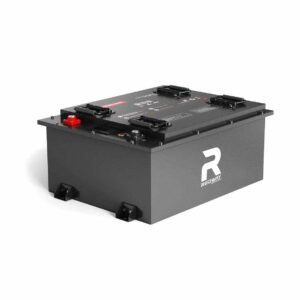What Is the Difference Between a Cell and a Cell Site?
A “cell” is a geographic area covered by a cellular network, while a “cell site” is the physical infrastructure (tower, antennas, equipment) that provides coverage to that area. Cells divide networks into smaller zones for efficient signal distribution, while cell sites house the hardware enabling communication between devices and the network. Together, they ensure seamless connectivity across regions.
What Batteries Do Cell Phone Towers Use? A Comprehensive Guide
What Defines a Cell in Cellular Communication?
A cell is a hexagonal-shaped zone within a cellular network, designed to optimize frequency reuse and minimize interference. Each cell is served by a cell site, which transmits and receives signals from mobile devices. The size of a cell varies based on population density—smaller cells (microcells) in cities, larger cells (macrocells) in rural areas.

What Components Are Found at a Cell Site?
A cell site includes a tower, base transceiver station (BTS), antennas, power supplies, and backhaul equipment. The BTS handles signal processing, antennas transmit/receive radio waves, and backhaul links the site to the network core. Modern cell sites may also feature small cells, MIMO antennas, and energy-efficient systems to support 5G and IoT demands.
Cell site components have evolved to address growing connectivity needs. The tower height typically ranges from 50 to 200 feet, optimized for line-of-sight transmission. Advanced cooling systems prevent equipment overheating, while fiber-optic backhaul ensures high-speed data transfer to central networks. Below is a breakdown of key components:
| Component | Function |
|---|---|
| Base Transceiver Station (BTS) | Manages radio signal processing and device connectivity |
| Antennas | Transmit/receive signals using multiple frequency bands |
| Power Supply | Provides backup power via batteries or generators |
| Backhaul Equipment | Connects cell site to mobile switching centers |
Why Are Cells Divided into Smaller Zones in Urban Areas?
Urban areas require smaller cells to manage high user density and prevent network congestion. Microcells and picocells split coverage into tiny zones, increasing capacity and reducing signal interference. This segmentation allows networks to reuse frequencies efficiently, ensuring faster data speeds and reliable connectivity in crowded environments like stadiums or business districts.
How Has 5G Technology Impacted Cell Site Design?
5G demands higher-frequency waves (mmWave) with shorter ranges, necessitating denser cell site deployment. Modern cell sites now use beamforming antennas, edge computing, and virtualization to boost speed and reduce latency. Many also integrate AI for real-time traffic management, enabling dynamic resource allocation for applications like autonomous vehicles and smart cities.
The shift to 5G has introduced massive MIMO (Multiple Input Multiple Output) antennas capable of handling dozens of simultaneous connections. Cell sites now require advanced thermal management systems to dissipate heat from high-power processors. Energy efficiency has become paramount—many operators use solar panels or wind turbines to offset power demands. The table below highlights key differences between 4G and 5G cell sites:
| Feature | 4G Cell Site | 5G Cell Site |
|---|---|---|
| Frequency Range | Sub-6 GHz | Up to 40 GHz (mmWave) |
| Antenna Type | Omnidirectional | Beamforming/Massive MIMO |
| Latency | 30-50 ms | <5 ms |
What Environmental Considerations Affect Cell Site Placement?
Cell sites require permits addressing visual impact, radiation levels, and ecological disruption. Towers in scenic or residential areas often use camouflage (e.g., tree disguises). Energy consumption is minimized via renewable sources (solar/wind) and passive cooling systems. Regulations also limit electromagnetic field (EMF) exposure to ensure public safety.
How Do Virtualized Cell Sites Differ from Traditional Ones?
Virtualized cell sites replace hardware-based components with software-defined networks (SDN) and network function virtualization (NFV). This reduces physical infrastructure, lowers costs, and allows remote upgrades. Cloud-RAN (C-RAN) architectures centralize processing, enabling scalable, flexible networks that adapt to changing traffic patterns instantly.
What Role Do Small Cells Play in Modern Networks?
Small cells (femtocells, metrocells) are low-power, short-range cell sites deployed indoors or in dense urban areas. They fill coverage gaps, enhance capacity, and offload traffic from macrocell towers. Small cells are critical for 5G networks, providing the ultra-dense infrastructure needed to support millimeter-wave frequencies and high-bandwidth applications.
“Cell sites are evolving from rigid infrastructure to agile, software-driven hubs. The shift to Open RAN and edge computing allows operators to deploy services faster while cutting costs. However, challenges like site acquisition and energy efficiency remain critical as networks scale for 5G and beyond.” — Telecom Infrastructure Analyst, GSMA Insights.
FAQ
- Q: Can a single cell site cover multiple cells?
- A: No. A cell site serves one cell, but advanced antennas can split the cell into sectors (e.g., tri-sector setups) to enhance coverage within the same geographic zone.
- Q: Do cell sites emit harmful radiation?
- A: Cell sites comply with strict EMF safety standards. Radiation levels are typically far below regulatory limits and decrease rapidly with distance from the antenna.
- Q: How long does a cell site take to install?
- A: Deployment ranges from weeks to months, depending on permits, zoning laws, and infrastructure readiness. Small cells can often be installed in days.
